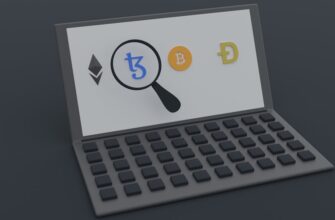- What is Crypto PC Mining?
- How PC Mining Actually Works
- Pros and Cons of Mining Cryptocurrency on Your PC
- Advantages:
- Disadvantages:
- Best Cryptocurrencies for PC Mining in 2024
- Step-by-Step Guide to Start Mining
- Optimizing Your PC for Maximum Mining Efficiency
- The Future of PC Mining
- Frequently Asked Questions
- Can I mine Bitcoin with my PC?
- Is PC mining profitable in 2024?
- Does mining damage my computer?
- What’s the minimum hardware requirement?
- How much electricity does PC mining use?
What is Crypto PC Mining?
Crypto PC mining is the process of using your personal computer’s hardware to validate blockchain transactions and earn cryptocurrency rewards. Unlike specialized mining rigs, this approach leverages everyday CPUs and GPUs to solve complex mathematical puzzles through a consensus mechanism called Proof-of-Work (PoW). When your PC successfully verifies a transaction block, you receive newly minted coins as compensation. This democratized approach allows individuals to participate in blockchain networks like Bitcoin, Ethereum Classic, and Monero without industrial-scale equipment.
How PC Mining Actually Works
At its core, PC mining involves three key components: blockchain software, mining hardware, and network participation. Your computer runs mining software that connects to a cryptocurrency network, competing with other miners to solve cryptographic puzzles. The process follows these stages:
- Transaction Verification: Miners collect pending transactions into a candidate block
- Hashing Competition: PCs race to find a valid hash solution using processing power
- Consensus Achievement: First miner to solve the puzzle broadcasts proof to the network
- Reward Distribution: Successful miner receives block rewards and transaction fees
Mining difficulty automatically adjusts based on network participation, ensuring new blocks are created at consistent intervals (e.g., every 10 minutes for Bitcoin).
Pros and Cons of Mining Cryptocurrency on Your PC
Advantages:
- Low Entry Barrier: Start with existing hardware
- Passive Income Potential: Earn while your computer runs
- Educational Value: Hands-on blockchain learning experience
- Support Decentralization: Contribute to network security
Disadvantages:
- Hardware Wear: Accelerated component degradation
- Energy Costs: Significant electricity consumption
- Diminishing Returns: Lower profitability vs. ASIC miners
- Heat and Noise: Increased cooling requirements
Best Cryptocurrencies for PC Mining in 2024
Choose coins with ASIC-resistant algorithms for optimal PC mining:
- Monero (XMR): Uses RandomX algorithm favoring CPUs
- Ravencoin (RVN): KawPoW algorithm optimized for GPUs
- Ethereum Classic (ETC): GPU-friendly Ethash protocol
- Vertcoin (VTC): Lyra2REv3 algorithm prevents ASIC dominance
- Grin (GRIN): CuckooCycle algorithm suitable for GPUs
Step-by-Step Guide to Start Mining
- Select Your Coin: Choose a PC-minable cryptocurrency
- Get a Wallet: Set up a secure crypto wallet
- Choose Mining Software: Options include XMRig for Monero or T-Rex Miner for GPU coins
- Join a Mining Pool: Combine resources with other miners (e.g., Nanopool, 2Miners)
- Configure Settings: Input wallet address and pool details
- Start Mining: Launch software and monitor performance
- Optimize: Adjust overclocking and power settings
Optimizing Your PC for Maximum Mining Efficiency
- Undervolt GPUs: Reduce power consumption without sacrificing performance
- Increase Airflow: Add case fans to maintain temperatures below 70°C
- Use Mining OS: Install lightweight OS like HiveOS for reduced overhead
- Overclock Memory: Boost GPU memory clocks for hash rate improvements
- Schedule Downtime: Allow hardware to cool during peak heat hours
The Future of PC Mining
While large-scale mining operations dominate Bitcoin, PC mining remains viable for newer coins and alternative algorithms. Emerging trends include:
- Proof-of-Stake transition reducing PoW opportunities
- Rise of energy-efficient mining algorithms
- Browser-based mining alternatives
- Increased regulatory scrutiny on home mining
- Development of CPU-optimized privacy coins
Profitability calculators remain essential as electricity costs and coin values fluctuate. Diversifying into staking or cloud mining can complement PC mining efforts.
Frequently Asked Questions
Can I mine Bitcoin with my PC?
While technically possible, Bitcoin mining requires specialized ASIC hardware for profitability. PC mining is only viable for ASIC-resistant cryptocurrencies.
Is PC mining profitable in 2024?
Profitability depends on electricity costs, hardware efficiency, and cryptocurrency values. Use calculators like WhatToMine to estimate earnings before investing.
Does mining damage my computer?
Continuous operation at high temperatures can reduce component lifespan. Proper cooling and undervolting mitigate risks significantly.
What’s the minimum hardware requirement?
Minimum: Quad-core CPU or mid-range GPU (e.g., GTX 1060). Recommended: Multi-GPU setup with 8GB+ VRAM and 16GB system RAM.
How much electricity does PC mining use?
A single GPU rig typically consumes 120-300W. Always calculate electricity costs against potential earnings.








